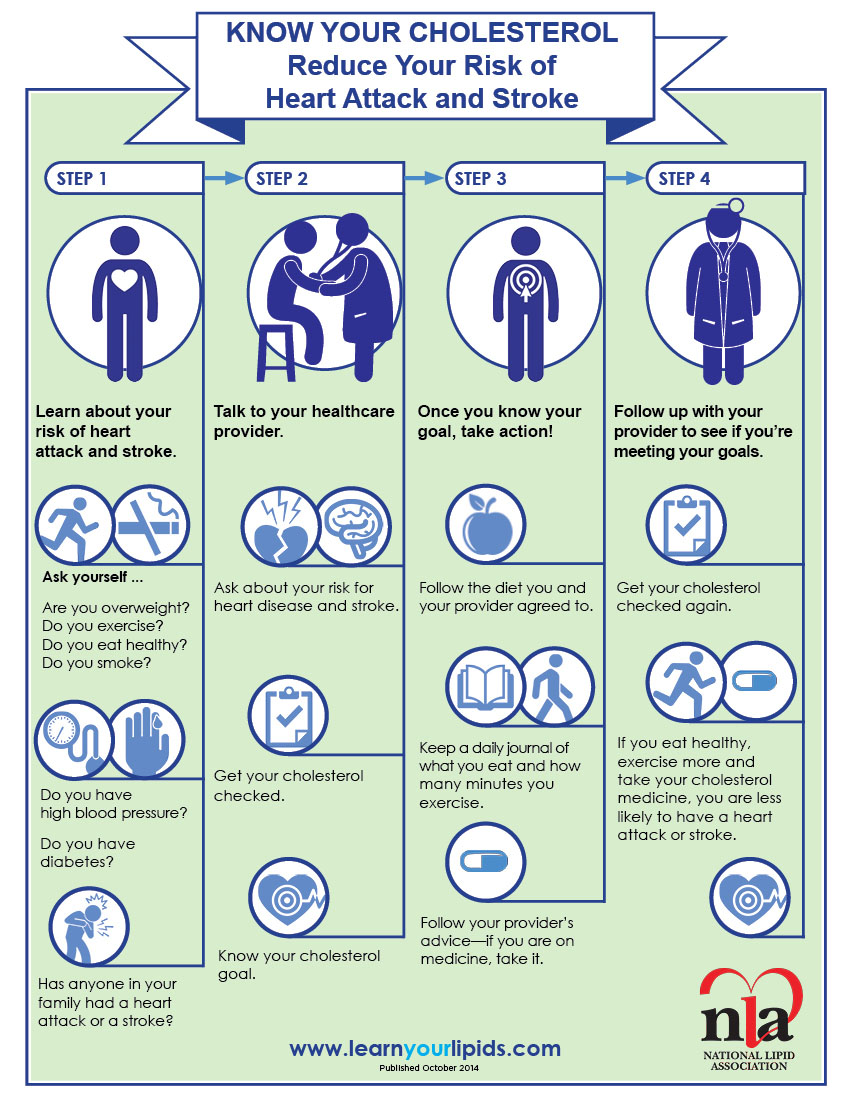Reduce Your Risk of Heart Attack and Stroke (infographic)
 An infographic by National Lipid Association.
An infographic by National Lipid Association.
What Bad Habits Are Increasing Your Heart Disease Risk?
 Annually, the American Heart Association (AHA), Centers for Disease Control (CDC), and National Institutes of Health (NIH) publish the latest statistics for heart disease and stroke. The most recent updates found deaths due to cardiovascular disease actually decreased by 33% over the past 10 years and deaths due to stroke were reduced 37%.
Annually, the American Heart Association (AHA), Centers for Disease Control (CDC), and National Institutes of Health (NIH) publish the latest statistics for heart disease and stroke. The most recent updates found deaths due to cardiovascular disease actually decreased by 33% over the past 10 years and deaths due to stroke were reduced 37%.
This goes to show that a significant amount of progress has been made to improve outcomes for those who suffer heart attacks and strokes. Great news!
What’s not so good news are the increasing risk factors of US adults making them more likely to suffer a heart attack or stroke. Did you know 68% of US adults are overweight or obese? Did you know 32% of children are overweight and 17% of children obese? And according to the AHA, CDC, and NIH, 33% of US adults do no engage in any aerobic leisure time physical activity. If you look around, it’s not so hard to believe that a majority of US adults are overweight and sedentary. Where do you fall?
Continue reading
Heart Disease Risk Factors You Control
 There are risk factors for heart disease that you have no control over, such as:
There are risk factors for heart disease that you have no control over, such as:
Age
Male sex
Family History
Post-menopausal
Race
You cannot do anything about the above risks, so there is no need to waste time dwelling on them. If you want to take action and reduce your risk of developing heart disease there are several controllable risk factors.
These include:
Your Checklist to Lower Cholesterol
Here’s a checklist of the top 8 things you must do if you want to successfully lower your cholesterol and keep it low.
Know your numbers
Have you had a lipid profile? Do you understand the numbers? If you are going to successfully lower cholesterol you need to know your numbers and what they mean. The most effective way to raise HDL is not necessarily the best way to lower LDL.
Evaluate your lifestyle
There are risk factors for high cholesterol that you can not control, such as age, gender, and family history, but there are factors you can control. For example, you can reduce risk by not smoking, increasing your activity, and losing extra weight.
Balance your fats
Reduce unhealthy saturated fats in your diet and replace them with heart healthy unsaturated fats. Total fat intake should be 30% or less of your total daily calories. Out of this 30%, saturated fat should be limited to 7%.
Be active
Physical activity lowers triglycerides and raises HDL (good) cholesterol. Shoot for 30 minutes 5 or more days a week. If you are not currently active, check with your MD before beginning an activity program.
Eliminate trans fats
You need to be food label savvy and watch out for trans fats. Trans fats raise LDL (bad) cholesterol, lower HDL (good) cholesterol, and raise triglycerides. Limit trans fats to 1% or less of your daily caloric intake.
Understand triglycerides
Triglycerides are impacted the most by your simple sugar and alcohol intake. If you are struggling with high triglycerides, you need to use a different strategy to get your cholesterol under control.
Increase dietary fiber
A high fiber diet is necessary for heart health. You need 25-35 grams of dietary fiber daily, especially soluble fiber. For every 1-2 grams of daily soluble fiber intake, LDL (bad) cholesterol is lowered 1%.
Add omega 3 fatty acids
For heart health and lower cholesterol, you want to improve the ratio of omega 3 to omega 6 fatty acids. Omega 3 fatty acids are involved in the regulation of heart rate, blood pressure, and blood clotting.
Receive a step by step plan to promote heart health with a Mini Diet Makeover. As a special New Year’s bonus you’ll recieve a complimentary copy of the Calorie Counter for Dummies. Learn more here – https://www.lisanelsonrd.com/minidietmakeover.html
All the best,
Lisa Nelson RD
How to Lower Cholesterol in 8 Simple Steps



